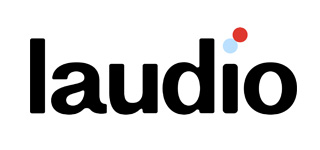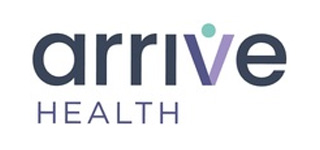Preliminary Landmark Findings Presented at the 2021 American Academy of Ophthalmology Conference Show Significantly Reduced Rate of Vision Loss for Glaucoma Patients
IRVINE, Calif., Nov. 15, 2021 /PRNewswire/ — Ivantis Inc., developer of the novel Hydrus® Microstent, a minimally invasive glaucoma surgery (MIGS) device intended to lower eye pressure for open-angle glaucoma patients, has announced new data from its five-year HORIZON pivotal trial showing that the Hydrus Microstent lowers the rate of visual field loss by 47% versus cataract surgery alone. The breakthrough findings position the Hydrus Microstent as the first glaucoma procedure to reduce vision loss compared to standard medical treatment in a large randomized clinical trial since trabeculectomy, the gold standard surgical intervention for glaucoma, first did so in the Collaborative Initial Glaucoma Treatment Study over 20 years ago.
The preliminary findings were presented on Saturday, Nov. 13 at 8 a.m. CST during the Original Paper session at the 2021 American Academy of Ophthalmology (AAO) meeting by Dr. Iqbal “Ike” Ahmed, research director at the Kensington Eye Institute and director of the Glaucoma and Advanced Anterior Segment Surgery (GAASS) Fellowship Program at the University of Toronto. The visual field findings are from work done by Dr. Gus Gazzard, professor of ophthalmology at Moorfields Eye Hospital.
“This is a game-changer. Since the inception of MIGS, the impact narrative has been largely restricted to surrogate endpoints – IOP lowering and medication reduction. At three years, we saw that Hydrus was impacting the rate of invasive secondary surgery, which was exciting. Now at five years, we have data indicating the Hydrus is affecting the underlying disease itself, which alters forever how we think of MIGS,” said Dr. Ahmed. “I applaud Dr. Gazzard and commend Ivantis for its tireless commitment and investment in furthering the science of MIGS, without which we would not have these significant outcomes.”
About Visual Field Loss
It is well documented that each decibel reduction in visual field loss from glaucoma has a dramatic impact on patient quality of life and healthcare costs1. Even a slight loss of vision can create a cascade of medical costs, from added glaucoma medications, surgeries, and doctor visits to additional hospitalizations from fractures and falls, to lost productivity at work.
The new five-year data derive from a review of all visual field follow-ups from baseline through five years for patients in the HORIZON study.
- Involving over 3,000 data points, eyes treated with the Hydrus Microstent show 47% lower rate of Visual Field loss after 5 years2.
- The retrospective analysis was led by Professor Gus Gazzard, chief of the glaucoma service at Moorfields Eye Hospital in London, United Kingdom. Full analysis will be presented in its entirety by Dr. Gazzard in early 2022.
“The public health implications of these findings are enormous as a reduction in the rate of visual field progression has the potential to delay or prevent vision loss and blindness in millions of individuals afflicted with glaucoma worldwide,” said Dr. Douglas Rhee, professor and chair of ophthalmology at Case Western Reserve University and University Hospitals and president-elect of the American Society of Cataract and Refractive Surgeons (ASCRS). “Several studies have shown that even small amounts of visual field loss can lead to limitations in common activities such as driving, reading, and a patient’s ability to exercise or go outside the house. Combining Hydrus with cataract surgery is an opportunity to treat patients early in their disease state. With a safe glaucoma surgery like Hydrus, the procedure can be performed in mild or early onset disease before significant visual loss has occurred.”
“In 1925, Dr. J. Stefansson of Winnipeg, Canada published results of his pioneering bypass glaucoma drainage procedure using a T-shaped tube device in the American Journal of Ophthalmology3,” said Dave Van Meter, Ivantis president and CEO. “Nearly 100 years later, his vision has come full circle with the pivotal findings that the Hydrus technology, and its revolutionary, flow enhancing design, reduces vision loss. Overnight, this finding makes MIGS one of the most essential solutions for the globally escalating glaucoma burden and further demonstrates the clinical benefit being provided to patients by Hydrus. It is tremendously gratifying to see the singularly significant impact of Hydrus on glaucoma patients and their quality of life.”
Key Five-Year HORIZON Findings
The HORIZON study is the largest prospective, randomized, controlled trial conducted for a MIGS device and the first with continuous five-year follow-up. HORIZON included 556 patients with mild to moderate glaucoma treated in 38 centers in nine countries in North America, Europe, and Asia. Patients were treated with cataract surgery plus the Hydrus Microstent or cataract surgery alone, respectively. Earlier results showed significant reductions in intraocular pressure (IOP), medication use, and secondary glaucoma surgeries:
- 73% of “mild” Hydrus Microstent patients (those on one glaucoma medication at baseline) remained medication-free at five years, compared with 48% in the cataract surgery-alone arm.
- There was a 20% to 30% improvement in the medication-free rate in the Hydrus group versus control at all time points. This represents the highest margin total of medication eliminations compared to a control group reported for any MIGS pivotal trial.
- With Hydrus, patients had a more than 60% (2.8x) reduction in the likelihood for requiring subsequent invasive glaucoma surgery — a clinically meaningful and statistically significant difference. Hydrus had a 2.5% rate of subsequent invasive glaucoma surgery, compared with 6.4% for cataract surgery alone.
- Confirmed safety at five years, including continued stability of endothelial cell loss compared to control.
About the Hydrus Microstent
Roughly the size of an eyelash, the Hydrus Microstent is a next-generation MIGS device designed to reduce eye pressure by reestablishing flow through Schlemm’s canal, the eye’s natural outflow pathway. When placed in the canal during minimally invasive microsurgery, the device restores the flow of fluid in the eye, using a Tri-Modal® mechanism of action:
- The Hydrus Microstent dilates and scaffolds Schlemm’s canal to augment outflow of aqueous humor from the anterior chamber.
- It maintains an opening through the trabecular meshwork from the anterior chamber into Schlemm’s canal.
- Its length spans approximately 90 degrees of the canal to provide consistent access to multiple fluid collector channels in the eye.
Approved by the FDA in August 2018 for use in conjunction with cataract surgery, the Hydrus Microstent is one of the most rigorously researched and thoroughly studied MIGS devices, with more than 4,000 cases treated globally in controlled clinical studies and registries in patients with a wide range of disease severities.



